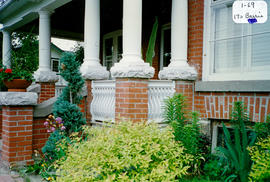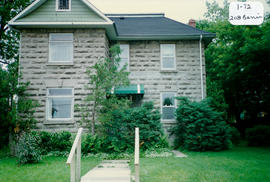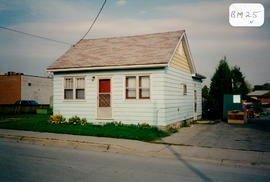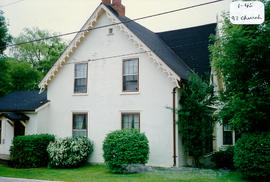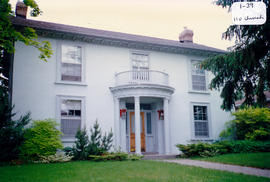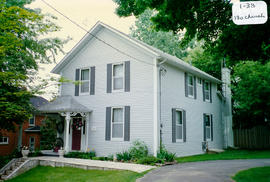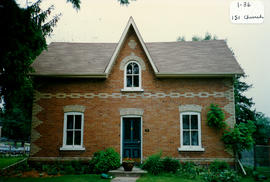170 Barrie Street - The Gib Lukes House
- CA BWGPL GJ-HB-2017-03-14-09
- Pièce
- 1996
Fait partie de George Jackson fonds
The Gib Lukes House is located mid-block on the west side at 170 Barrie Street. It was built post-1900 in the Edwardian Classicism style. The garage at the rear where Gib Lukes parked his Stanley Steamer automobile is currently the building at 123 Moore Street being used as the Bradford Food Bank.
The two-storey, rectangular building has a strong, simplistic underlying form. It has a two-storey projecting bay, hip roofs and projecting dormers. There is a classically-inspired entrance portico with a balcony above. The porch roof is supported on Doric colonnettes on brick piers. A pediment form highlights the entrance. The roof line has a dormer and substantial chimneys. Decorative soffit brackets surround the main eaves and dormer eaves. The house has a variety of window sizes. The brick window arch has a subtle ‘eyebrow’ detail. Transoms are found at the bay windows. The house has brick masonry construction and painted wood cornice, porch, balcony and dormer details. There is a stone foundation. According to the 2000 inventory, the house is maintained well. (1, 3)
Sans titre


